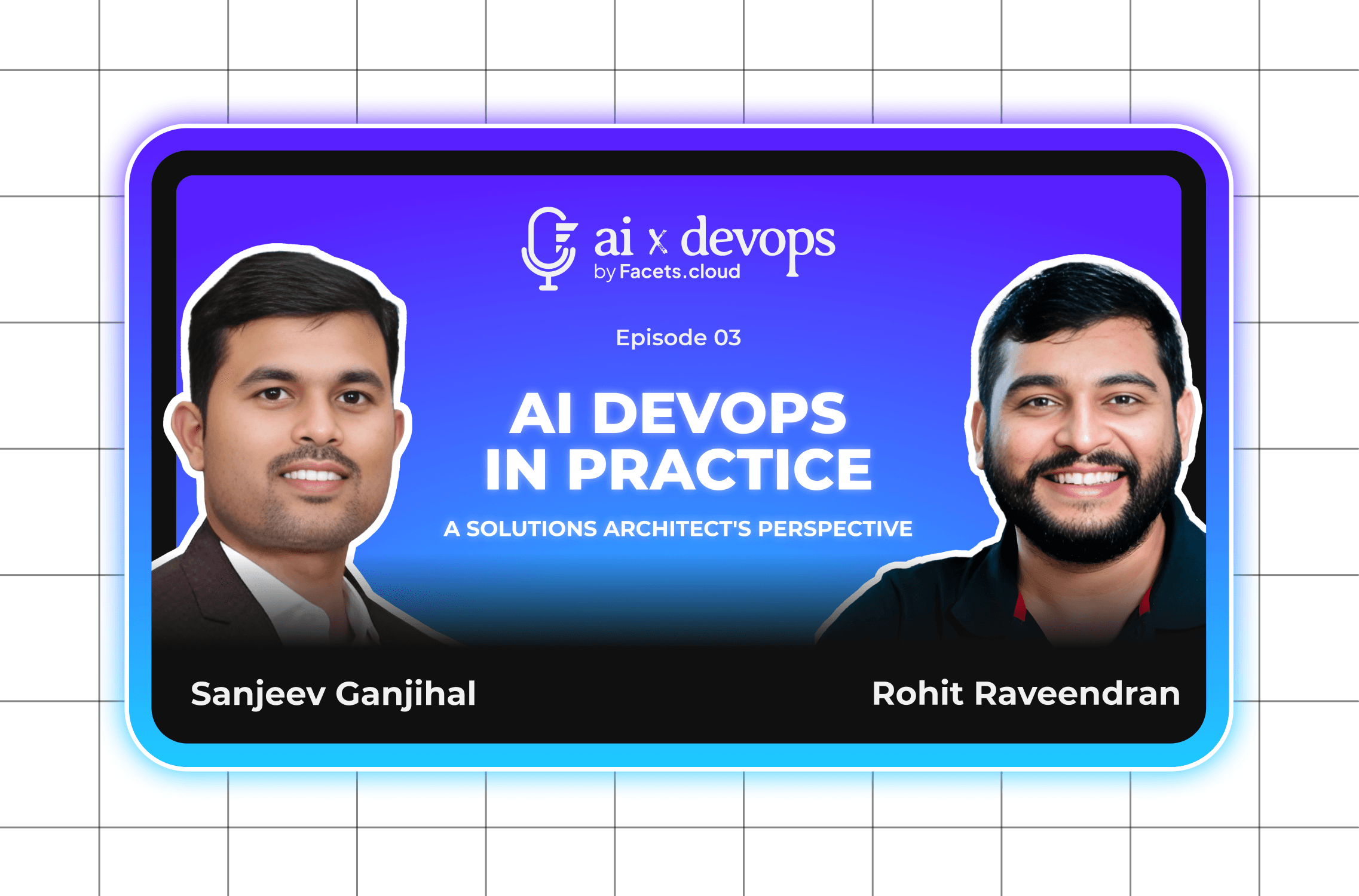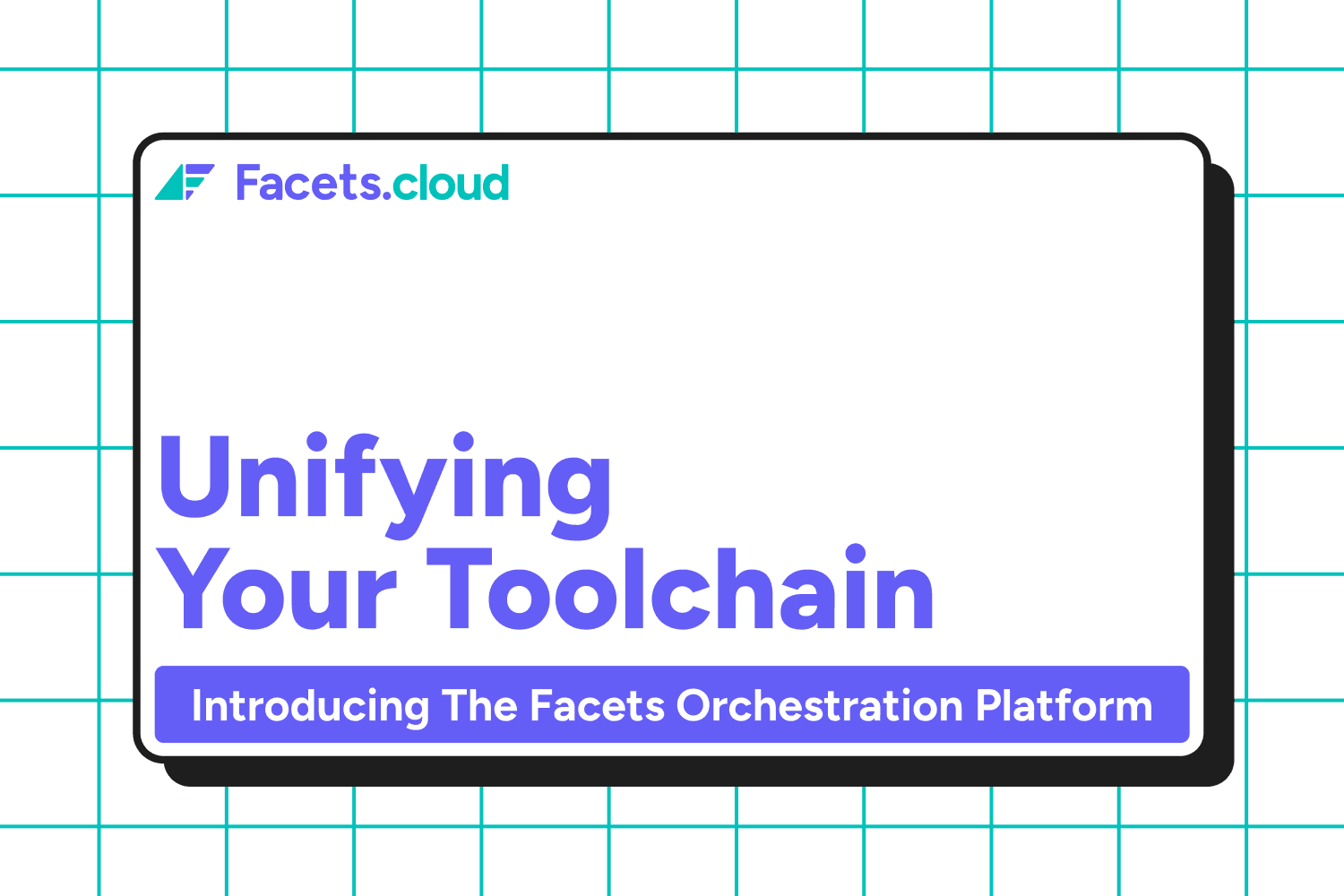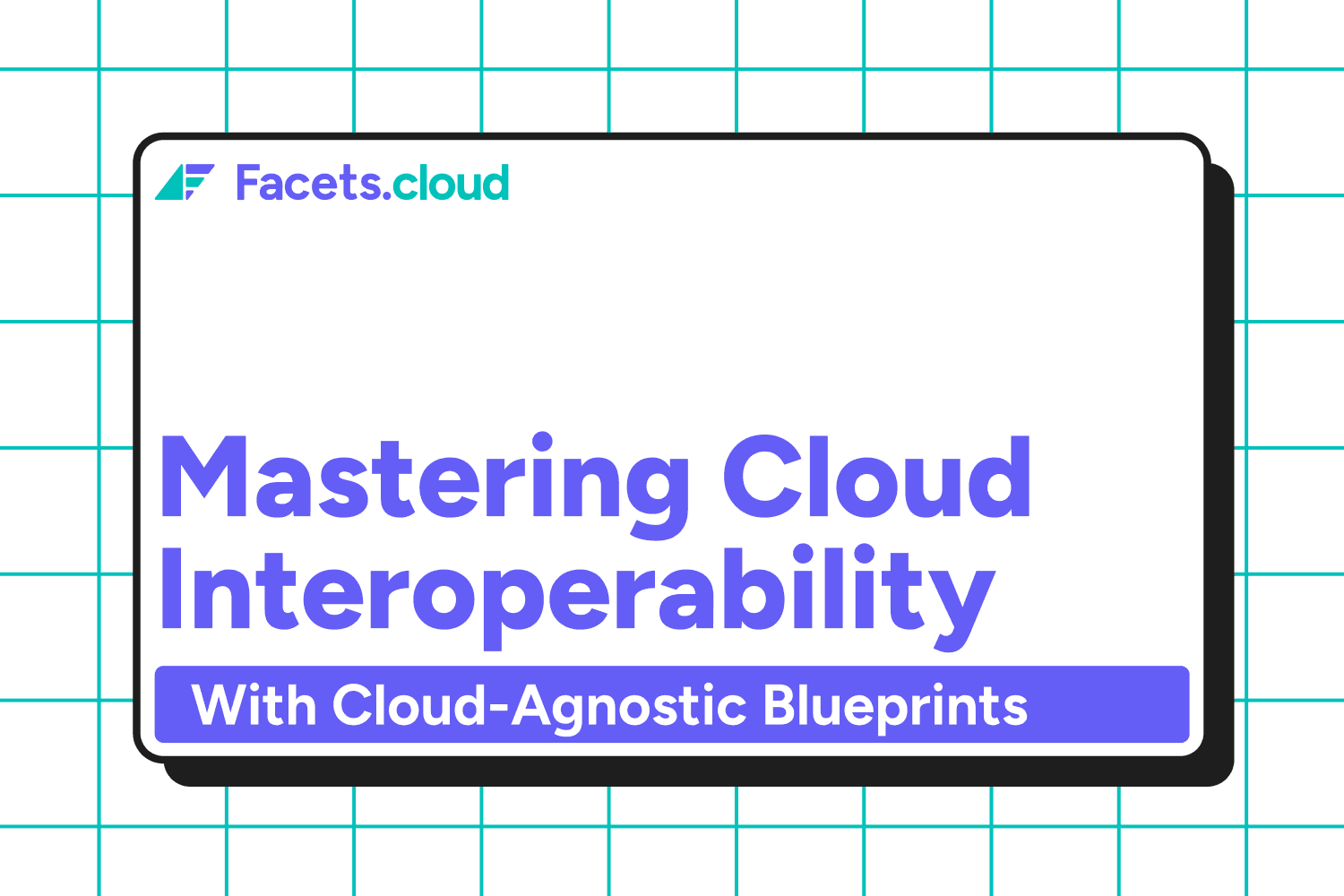Companies often think of cloud environments as assets they've built, but in reality, they should be commodities—something that can be created, updated, or deleted at any time.
What do I mean by that?
When environments are treated as fixed investments, teams hesitate to spin up new ones, seeing them as too much effort for little utility. But when environments are easily provisioned and managed, they become enablers rather than burdens.
A system that makes the cloud environment lifecycle effortless unlocks:
- Scaling across Regions - Easy launch and no overhead of maintenance when you expand your business to new regions or cloud
- Performance testing on demand – No waiting, just spin up, test, and tear down.
- Feature validation without constraints – Test changes in isolation, without impacting shared environments.
- Fast disaster recovery – Recreate known-good states instead of firefighting broken ones.
- Lower MTTR (Mean Time To Recovery) – Detect configuration drifts easily and roll out fixes in minutes
The real asset isn't the environment. It's the centralization of information that facilitates a repeatable environment creation and maintenance process that is the real asset.
Why Do "Environments" Matter More?
Scenario 1:
Modern agile teams often work on large features in parallel and require dedicated test beds for functional and performance testing.
A developer wraps up their feature and says, "Can I have an isolated environment to test this?" But what they really mean goes beyond just pushing code. It means ensuring that **everything—code, dependencies, infrastructure, configurations, and monitoring—**is in place and working together seamlessly. The question is, how long will this take?
Scenario 2:
There is a cloud outage, and the management asks, “Can we switch over to a different cloud region?” Even if you have a copy of your latest data in another region, how long will it take to launch a fully functional environment and switch over?
In cloud-native development, infrastructure is described as Kubernetes clusters, databases, and load balancers. But for developers, infrastructure alone isn’t enough. What they truly work with are environments—staging, UAT, production, and preview—where their code runs end-to-end. These environments aren’t just collections of infrastructure components; they also include deployments, security policies, observability, and the context necessary to ensure applications function as expected.
In the next section, we’ll introduce how environment lifecycle management is broken—and what needs to change.
Exploring Alternatives for Environment Lifecycle Management
Instead of explaining environments as just another infrastructure challenge, let's apply a familiar CRUD (Create, Read, Update, Delete) analogy, i.e., how environments are created, monitored, updated, and eventually retired. Let’s walk through each stage.
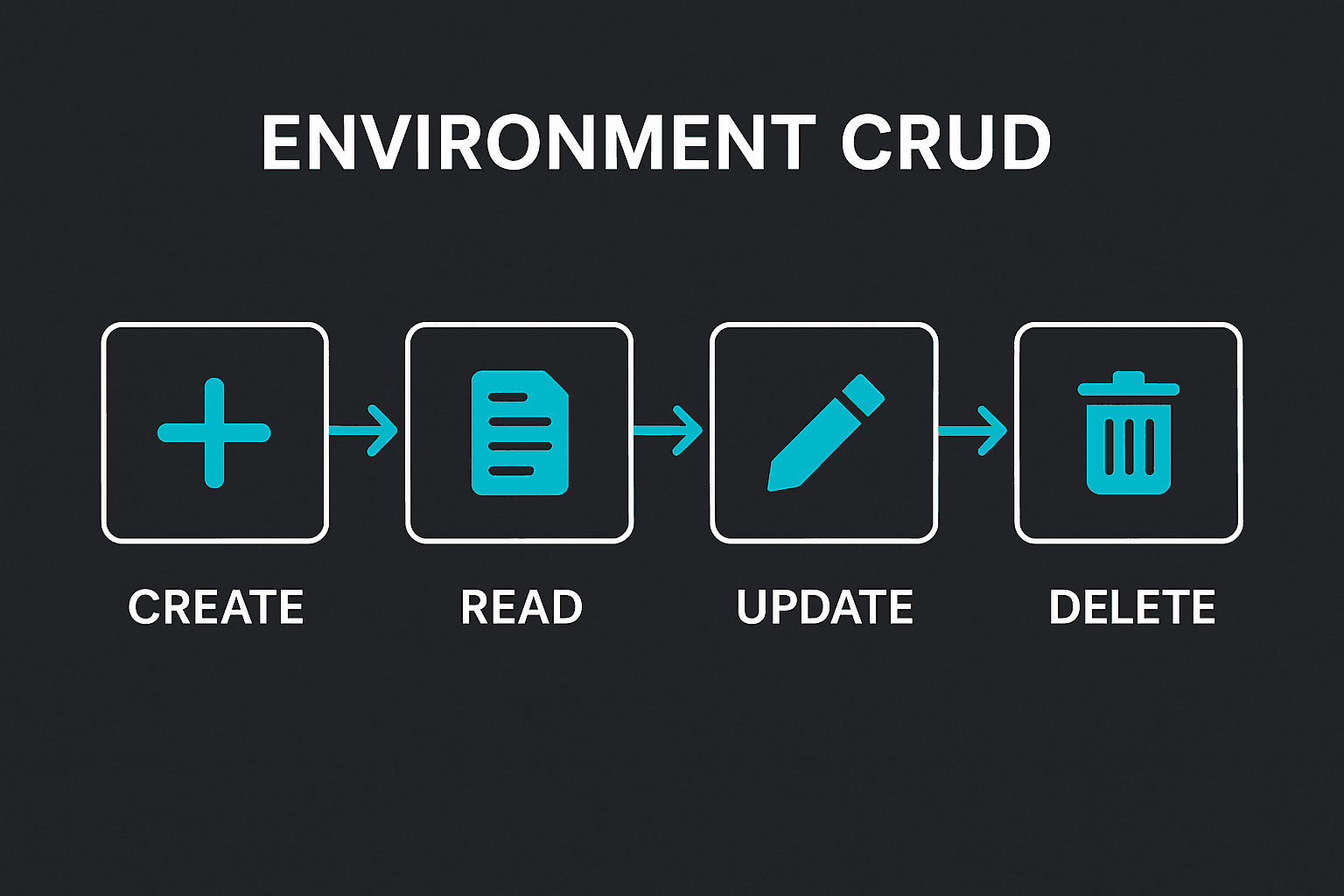
1. Create: Why does Spinning up an environment take so long?
Imagine a developer who wants to launch a new Performance Testing environment, similar to the regular QA environment, with a higher autoscaling configuration. Ideally, they’d just press a button, and everything—code, dependencies, infrastructure, security policies, and monitoring—would come together seamlessly.
Traditional Approach:
Creating an environment takes days or even weeks. It often requires:
- Multiple teams to handle different components.
- A long run book with manual steps; Setting up networking, base infrastructure through IaC, secrets, credentials, deployment pipelines, databases, and domains.
Over time, the runbook itself becomes stale and outdated.
What Needs to Change?
- Declarative, not Procedural: Rather than a procedural run book, environment should be declaratively defined:
- Requirements specified by the developers, e.g., a Postgres
- What builds to select, e.g., the master branch
- Which configurations to override. e.g., autoscaling limits
- These definitions should live in a single source of truth, inheriting standard configurations while overriding specific characteristics where necessary.
Facets Approach:
Facets unifies infrastructure, code, and configuration into cohesive blueprints, eliminating silos, ensuring a single source of truth, enabling environment-specific overrides for consistency across environments.
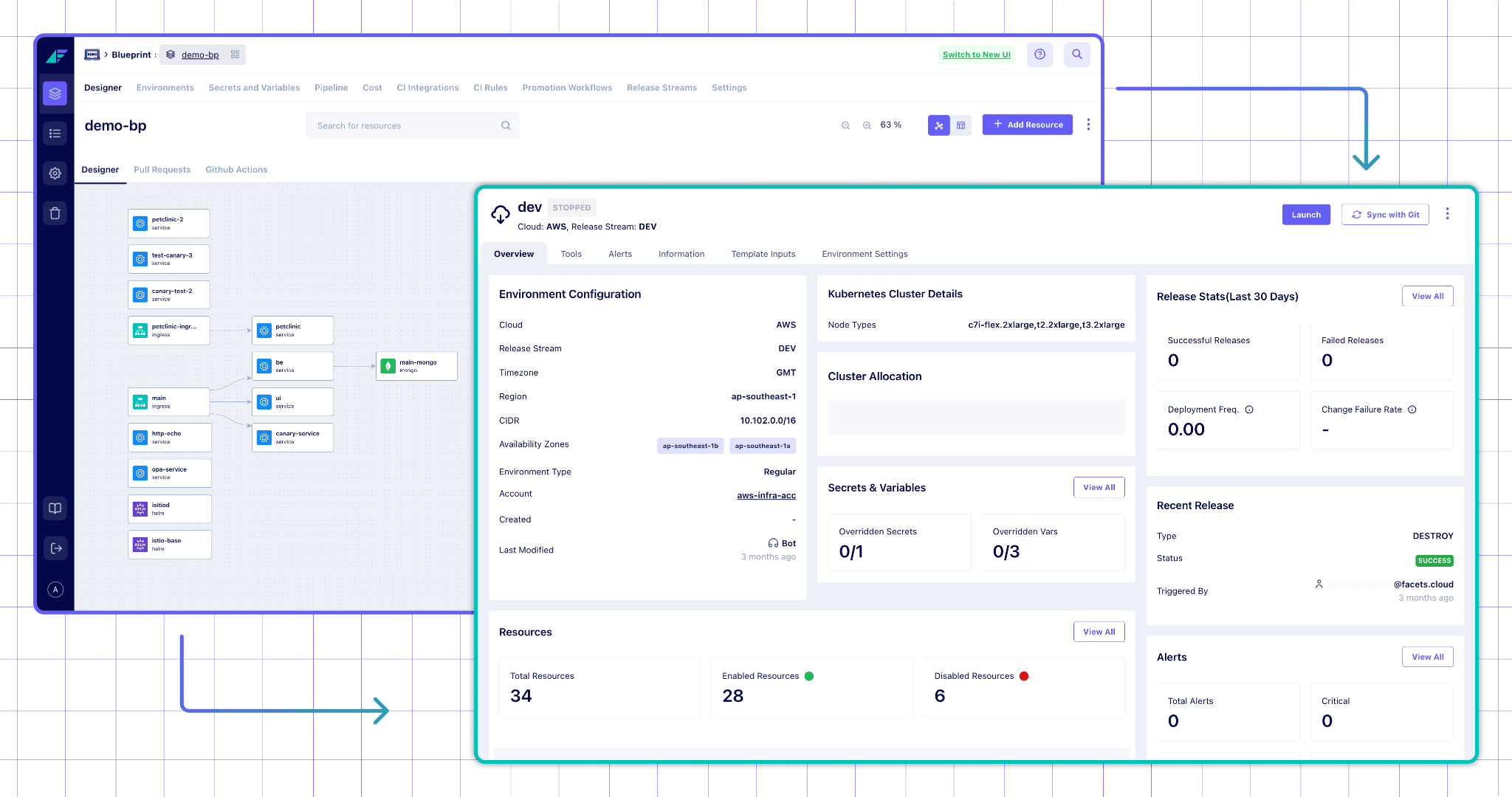
2. Read: Why is information about an environment scattered?
A common frustration in software teams is not knowing what’s running where. A developer investigating a performance issue might ask:
- "Are all production environments affected, or just one?"
- "When was the last release deployed?"
- "Did Ops modify any configurations?"
Traditional Approach:
- Scattered tools force teams to dig through different tools like logs, dashboards, and release management for answers, where information may not be consistently tagged
- Configuration changes lack visibility, making debugging slow and frustrating.
- Cloud resources are tagged with environments, but are all assets of environments consistently tagged like configurations, change sets, and metrics?
What Needs to Change?
- Explicit lineage: Every environment should have real-time traceability from Teams to resources and configurations
- Changesets: e.g., what all changes have been pushed to an environment in the last 6 hours?
- Configurations: e.g., how does one environment configuration differ from others?
- Alerts and more: what are the open alerts in my production environment?
- Cost: e.g., what is the cost of my QA environment?
- Developers should have instant access to environment data through a single, centralised view.
Facets Approach:
By consolidating all environment insights into a single view, we let teams make faster, more informed decisions about their infrastructure. Real-time visibility across resource utilisation and performance metrics enables proactive management, helping teams identify and address potential issues before they impact operations.
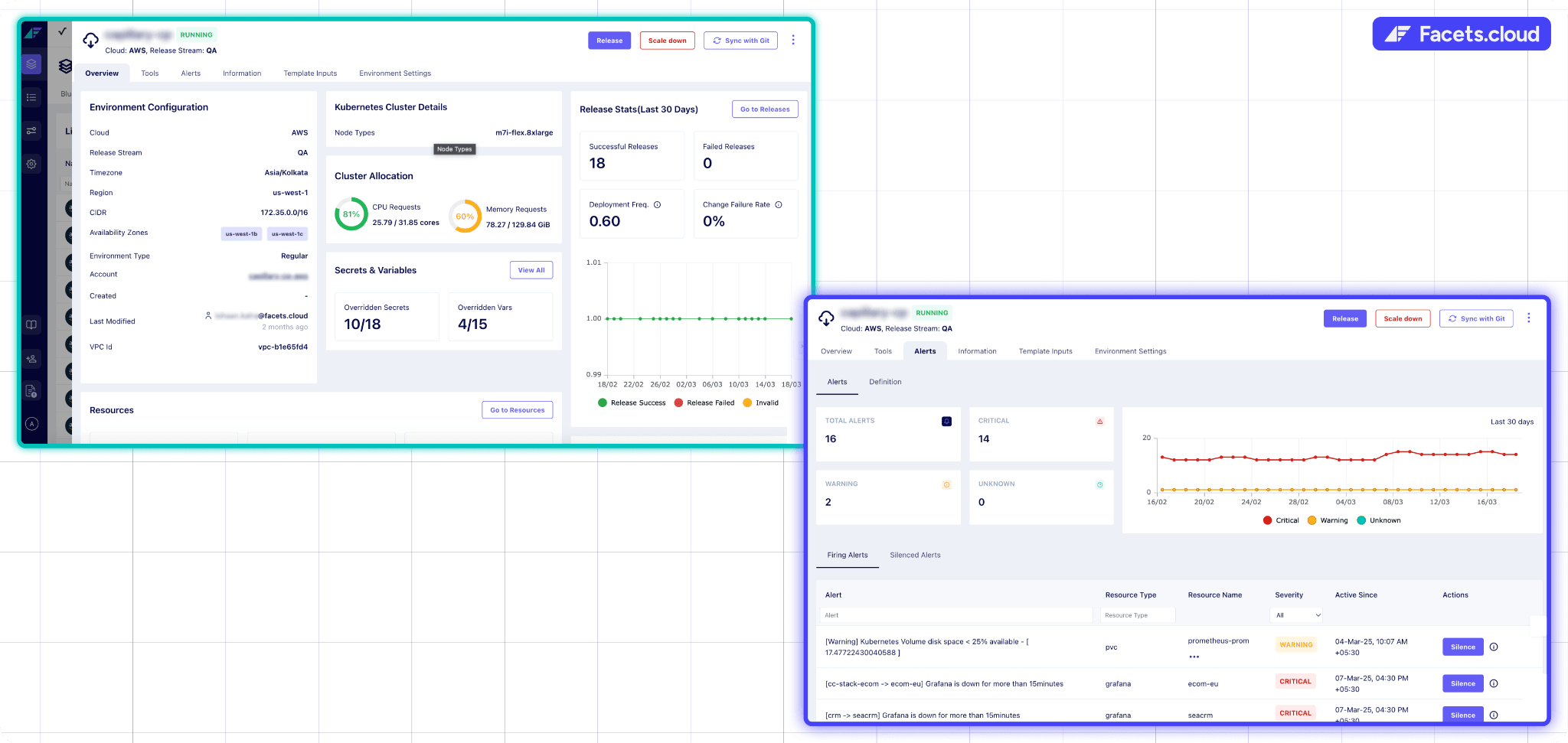
3. Update: How do I push changes consistently?
Updating an environment should be seamless, yet today, it’s a high-stakes, fragmented process, spanning across owners of various pipelines, code, configuration, infrastructure, database, monitoring, alerting, tagging -- as many as 32 different categories of pipelines that may modify an environment.
Traditional Approach:
- Code, infrastructure, and configurations have separate pipelines, creating unnecessary inter-pipeline dependencies.
- Updating an environment means triggering multiple pipelines in a specific order.
What Needs to Change?
- A single environment orchestrator:
- Orchestrates multiple pipelines automatically.
- Ensures eventual consistency across environments.
- Eliminates the need for ticket-based infra changes.
- A system where developers can deploy, provision resources, and update configurations without depending on Ops.
Facets Approach:
Managing changes becomes simpler when every update - from code deployments to configuration changes - follows one consistent process. With built-in pipelines, updates are handled seamlessly, ensuring consistency and minimising disruptions.
Once an environment is launched, users can scale resources, modify configurations, or deploy new application versions within the same streamlined workflow.
The platform ensures that all changes are applied consistently across environments, reducing the risk of errors.
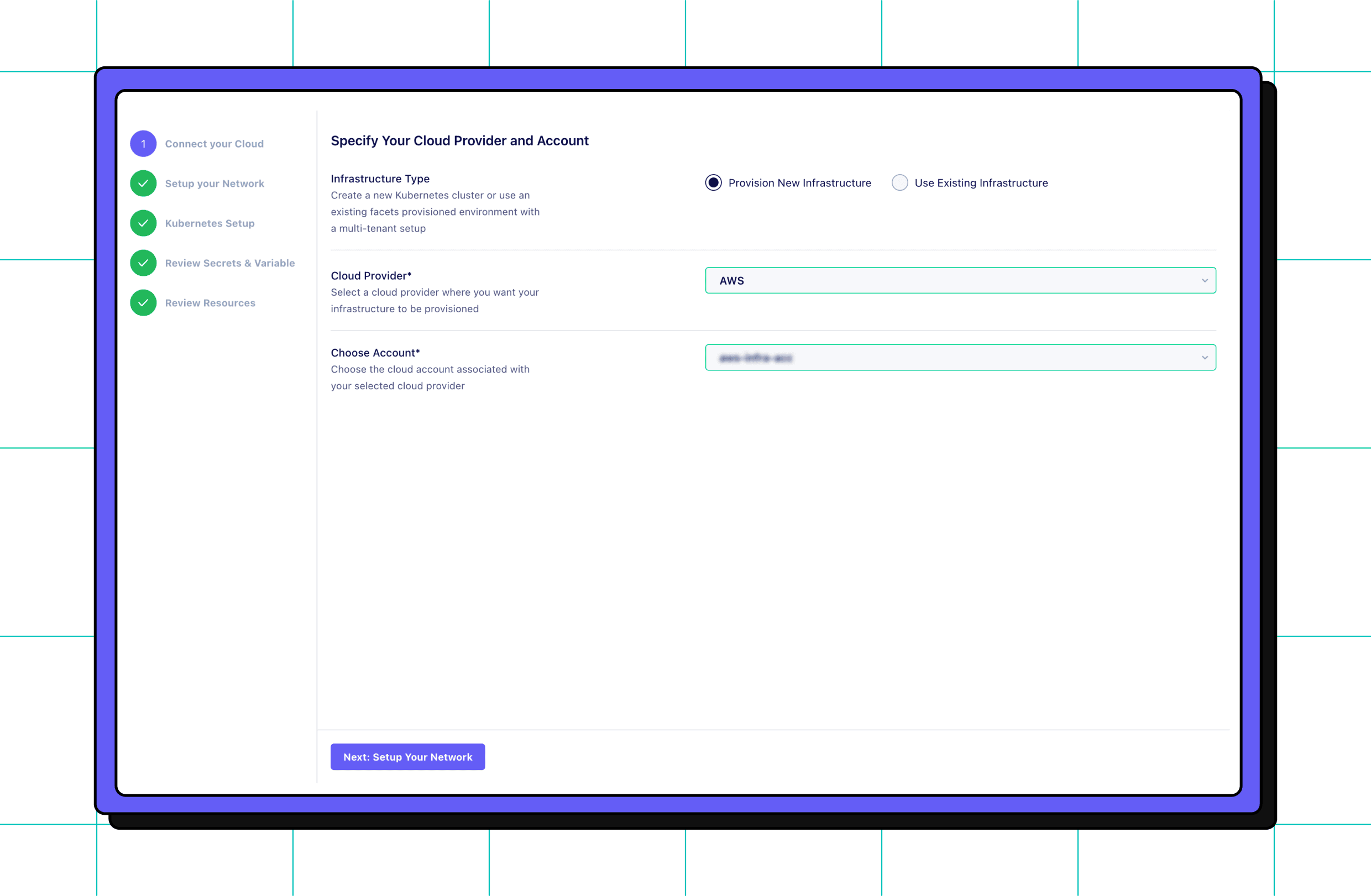
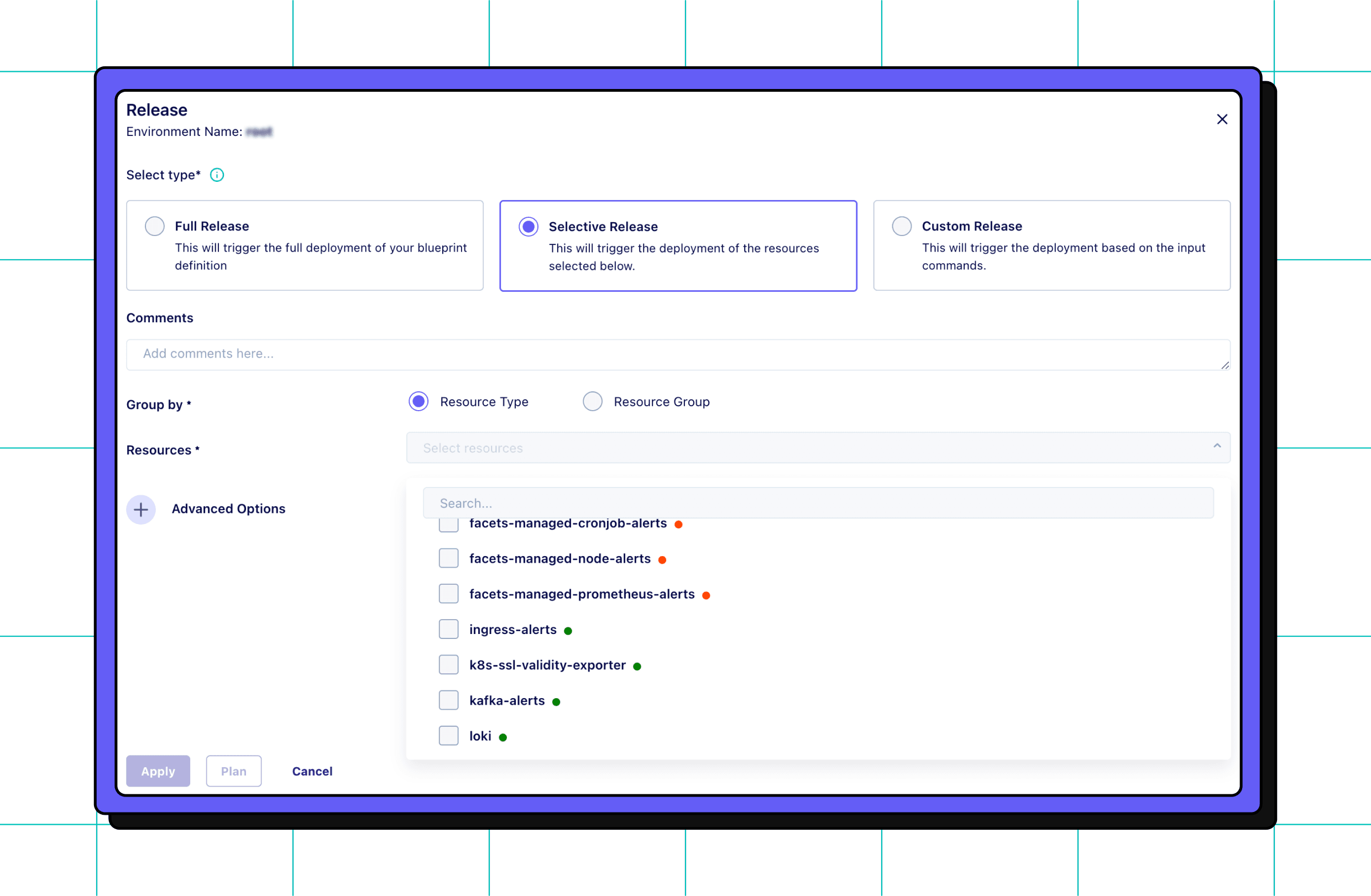
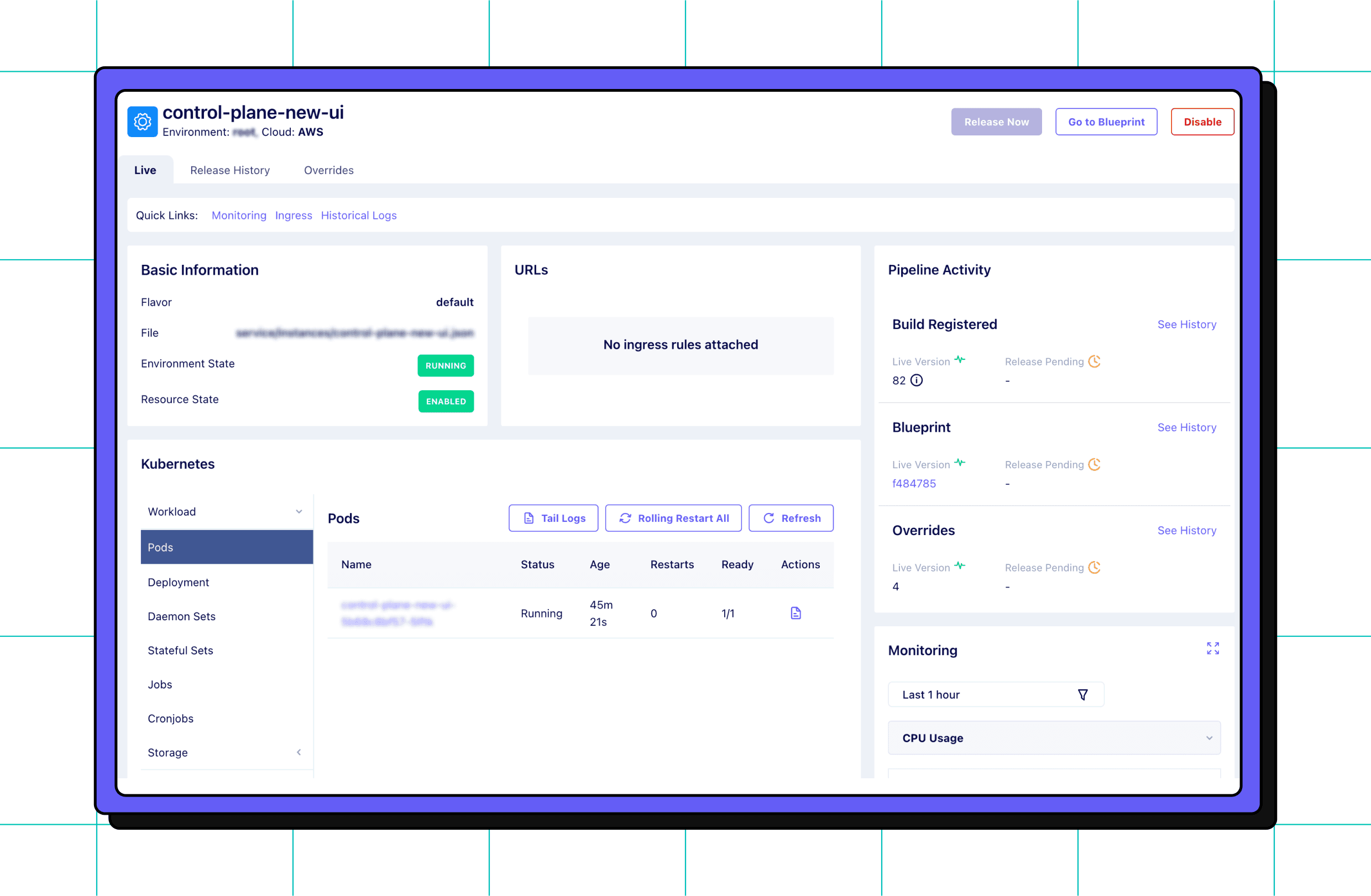
4. Delete: Why Do Old Environments Linger?
Ever heard someone say, "Do we still need that test environment?"—only to realise it’s been running for months, racking up cloud costs?
Traditional Approach:
- Cleaning up environments is manual and risky.
- No automated cleanup policies, leading to resource sprawl.
- Teams hesitate to delete environments, fearing accidental loss of critical data.
What Needs to Change?
- Automated cleanup policies to define expiration rules for non-production environments.
- Guardrails against accidental deletions, ensuring clear ownership and alerts before termination.
- Dynamic environment hibernation, adjusting infrastructure usage based on demand.
Facets Approach:
When an environment is no longer needed, Facets makes it easy to destroy all resources and delete the cluster. This ensures cost efficiency and prevents resource sprawl.
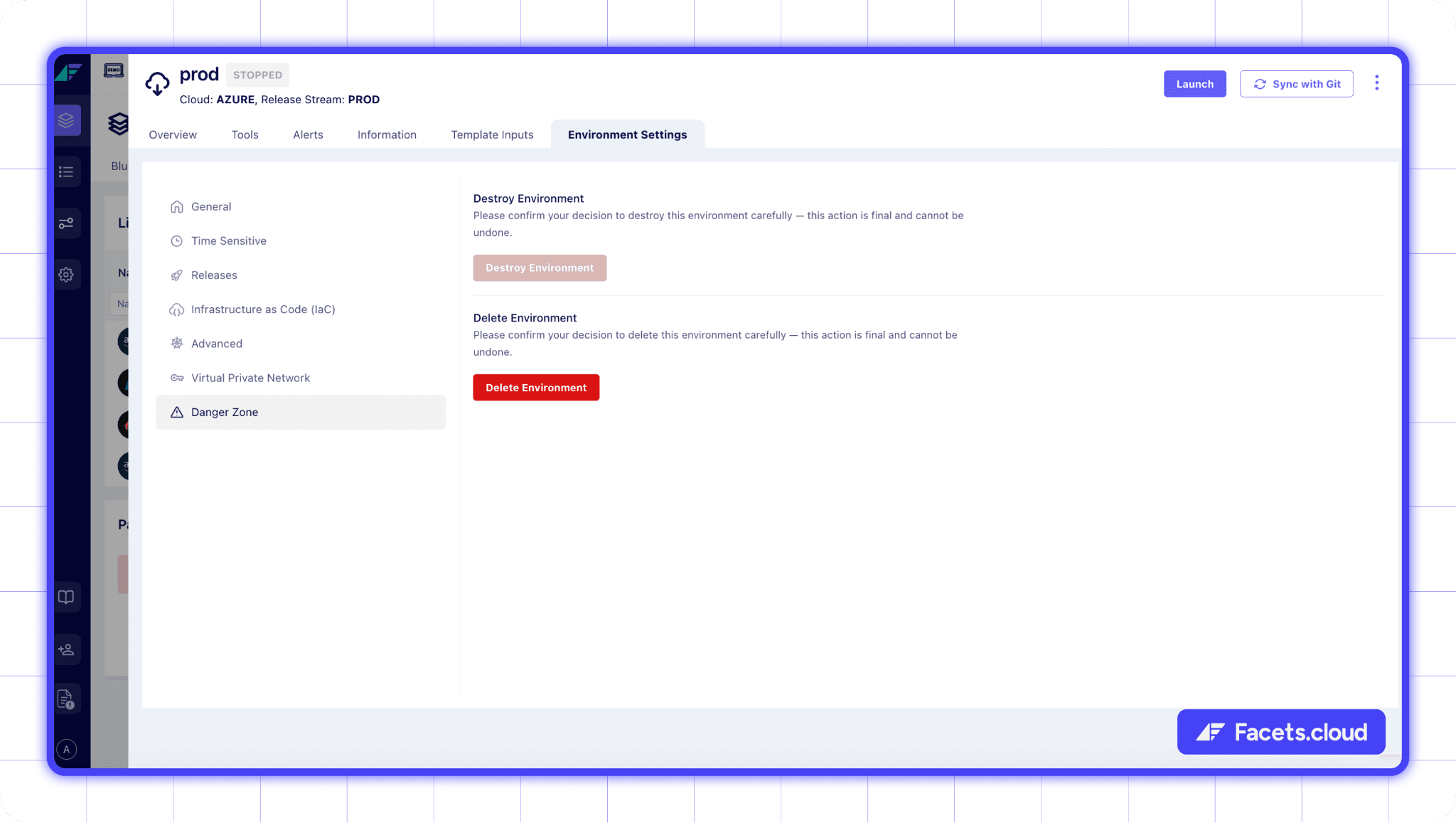
Conclusion: A New Approach to Environment Management
Traditional environment management is slow, fragmented, and resource-intensive. Developers deal with inconsistent environments, DevOps teams are bogged down by manual configurations, and organizations end up wasting time and cloud costs on inefficiencies.
What Needs to Change?
- Environments should be commodities, not assets – treating environments as first-class entities ensures they are consistently available and reliable.
- Automation should replace manual intervention – reducing reliance on runbooks, ad-hoc scripts speeds up deployment cycles.
- Visibility should be real-time and centralized – developers should have access to clear lineage tracking, monitoring, and configuration changes.
- Environment cleanup should be proactive – automated policies for hibernation and deprovisioning ensure cloud costs remain under control.
And here are the benefits that you can expect -
- Drift-Free Environments: Every environment stays consistent and error-free, with environment-specific overrides applied without drift.
- Reducing Complexity: No more Terraform sprawl, manual Helm charts, and brittle runbooks. Automation eliminates repetitive tasks and ensures a reliable setup.
- Saving Time: What once took weeks or months now happens in minutes, allowing DevOps to focus on high-value work.
- Lowering Costs: Automated cleanup and optimisation prevent cloud waste, keeping costs under control.
